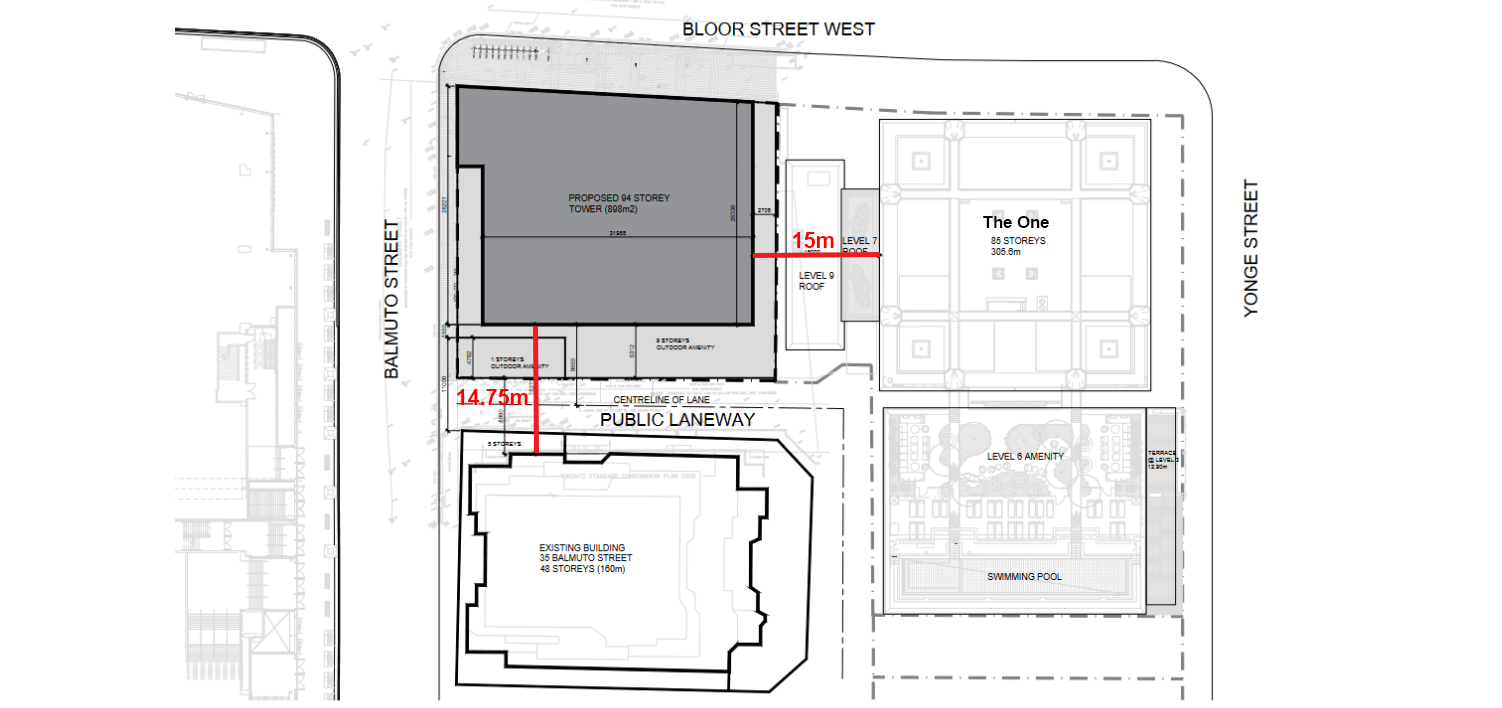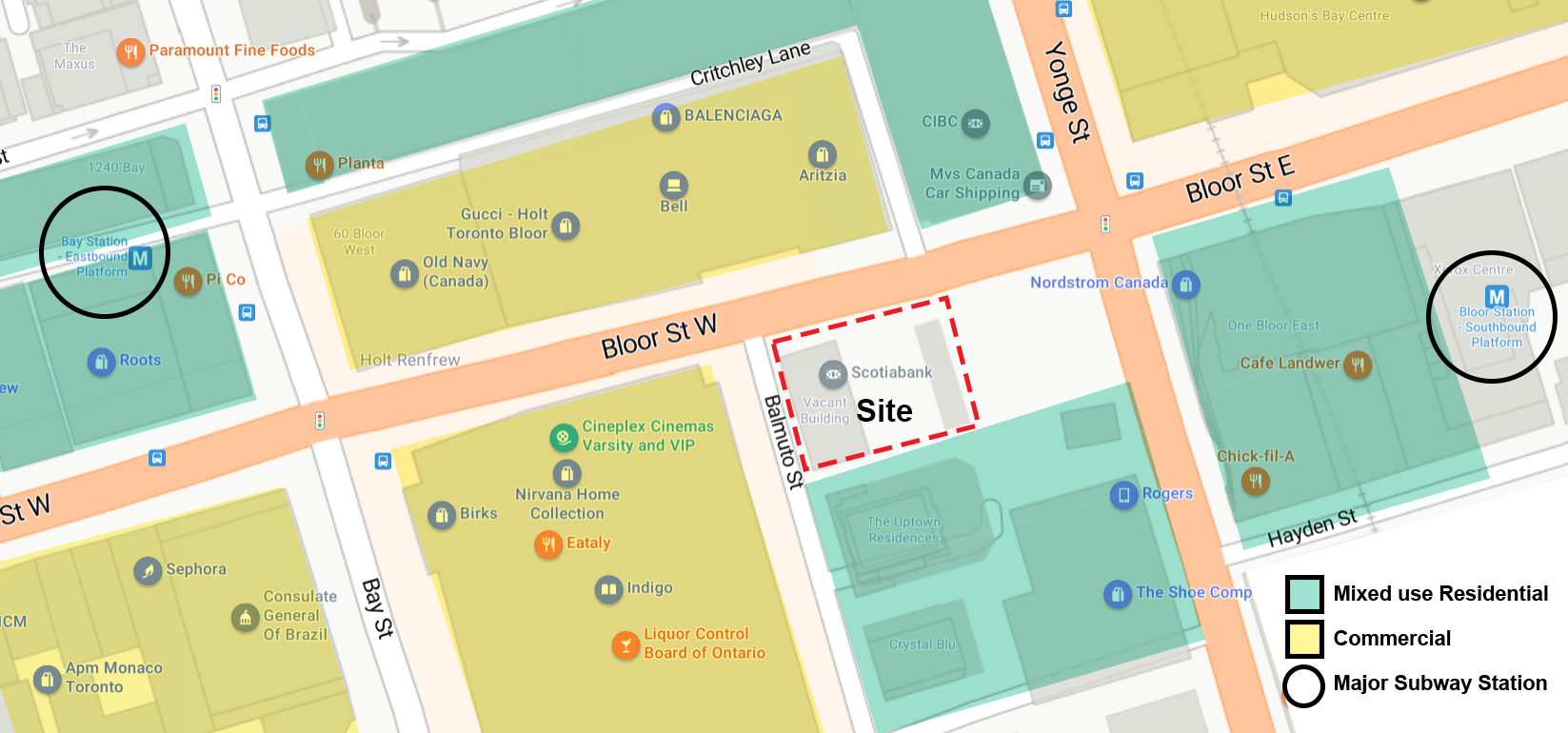UNDERGRADUATE
Lincoln Uy—Minto Sustainability Award in Architectural Science
![]()
Lincoln Uy—Minto Sustainability Award in Architectural Science

About the Award:
This award is for a student in architectural science for an outstanding studio project with a focus on sustainable design.
Sustainable Practices
ASC200 introduces students to the realm of sustainability, while bridging these fundamental principles with architectural and urban design. Specifically, holistic sustainability in design recognizes and responds to environmental protection, social equity, and economic viability in an interconnected manner. Each element is essential to understanding the key relationships of a building and its system, while improving the well-being for both present and future generations. One notable assignment focused on evaluating a proposed building project in Toronto—the one analyzed being a 94-storey condo along Bloor-Yonge.
Developmental Assessment
… Among these new high-rise developments, Reserve Properties and Westdale Properties proposed a 94-storey condominium situated directly west of The One, Toronto’s fourth-tallest skyscraper now under construction (Bessai & White, 2023). By replacing two low-rise retail properties with 1262 new dwelling units, the new building will serve as one of several high-rise condominiums in the Bloor-Yonge skyscraper complex.
… Every large-scale development project is bound to cause countless ripple effects on the surrounding community and environment. These impacts, however, typically stem from "good" building intentions, which often does not translate into projects that are holistically sustainable. The 94-storey skyscraper sparked major controversy when it was revealed that only 70 parking spaces would be made available for all residents and visitors to the 1262 unit condominium (Bessai & White, 2023). While proponents and developers have claimed that doing so was out of “good” intention to perpetuate the reduction of cars and carbon emissions, they failed to account for a number of unforeseen interconnected outcomes.
Massive skyscrapers in Toronto continue to compact the city's landscape, rendering the streets less walkable as a result. Due to their immense size, metropolis skyscrapers have the ability to direct even the strongest wind gusts in a certain direction (Nanowski, 2019). … Another environmental issue with the proposed skyscraper is its blockage of light and views on the surrounding neighbourhood. … Instead of developing wealth-exclusive projects that will likely result in wasted space, the City of Toronto should place a much higher priority on the adaptive reuse of existing structures. For instance, transforming vacant office buildings, hotels, or warehouses into affordable housing units can be a cost-effective approach to increasing the supply of housing at affordable prices. These efforts could be accomplished through partnerships with non-profit groups or commercial developers who are dedicated to affordable housing.
… The developers should begin to analyze the project from a holistic lens, where each building condition and effect “cannot exist or be understood separately from the whole” system (Stopps, 2023). Each “good” intention or cause carries a system of after effects that directly influence other environmental, social, and economic factors within the surrounding community. By examining each element of the system and its resulting benefits and consequences, developers will be able to understand the true nature and viability of the project as opposed to rigidly following a set of uncorrelated end goals.
In Gratitude
Thank you to my professor, Helen Stopps, for expanding my perspective on how decisions concerning design may have a significant effect on the systems that surround us. ASC200 has taught me the value of critical thinking and the realization that sustainability encompasses a lot more factors that are all vital for creating a well-rounded building.
This award is for a student in architectural science for an outstanding studio project with a focus on sustainable design.
Sustainable Practices
ASC200 introduces students to the realm of sustainability, while bridging these fundamental principles with architectural and urban design. Specifically, holistic sustainability in design recognizes and responds to environmental protection, social equity, and economic viability in an interconnected manner. Each element is essential to understanding the key relationships of a building and its system, while improving the well-being for both present and future generations. One notable assignment focused on evaluating a proposed building project in Toronto—the one analyzed being a 94-storey condo along Bloor-Yonge.
Developmental Assessment
… Among these new high-rise developments, Reserve Properties and Westdale Properties proposed a 94-storey condominium situated directly west of The One, Toronto’s fourth-tallest skyscraper now under construction (Bessai & White, 2023). By replacing two low-rise retail properties with 1262 new dwelling units, the new building will serve as one of several high-rise condominiums in the Bloor-Yonge skyscraper complex.
… Every large-scale development project is bound to cause countless ripple effects on the surrounding community and environment. These impacts, however, typically stem from "good" building intentions, which often does not translate into projects that are holistically sustainable. The 94-storey skyscraper sparked major controversy when it was revealed that only 70 parking spaces would be made available for all residents and visitors to the 1262 unit condominium (Bessai & White, 2023). While proponents and developers have claimed that doing so was out of “good” intention to perpetuate the reduction of cars and carbon emissions, they failed to account for a number of unforeseen interconnected outcomes.
Massive skyscrapers in Toronto continue to compact the city's landscape, rendering the streets less walkable as a result. Due to their immense size, metropolis skyscrapers have the ability to direct even the strongest wind gusts in a certain direction (Nanowski, 2019). … Another environmental issue with the proposed skyscraper is its blockage of light and views on the surrounding neighbourhood. … Instead of developing wealth-exclusive projects that will likely result in wasted space, the City of Toronto should place a much higher priority on the adaptive reuse of existing structures. For instance, transforming vacant office buildings, hotels, or warehouses into affordable housing units can be a cost-effective approach to increasing the supply of housing at affordable prices. These efforts could be accomplished through partnerships with non-profit groups or commercial developers who are dedicated to affordable housing.
… The developers should begin to analyze the project from a holistic lens, where each building condition and effect “cannot exist or be understood separately from the whole” system (Stopps, 2023). Each “good” intention or cause carries a system of after effects that directly influence other environmental, social, and economic factors within the surrounding community. By examining each element of the system and its resulting benefits and consequences, developers will be able to understand the true nature and viability of the project as opposed to rigidly following a set of uncorrelated end goals.
In Gratitude
Thank you to my professor, Helen Stopps, for expanding my perspective on how decisions concerning design may have a significant effect on the systems that surround us. ASC200 has taught me the value of critical thinking and the realization that sustainability encompasses a lot more factors that are all vital for creating a well-rounded building.




